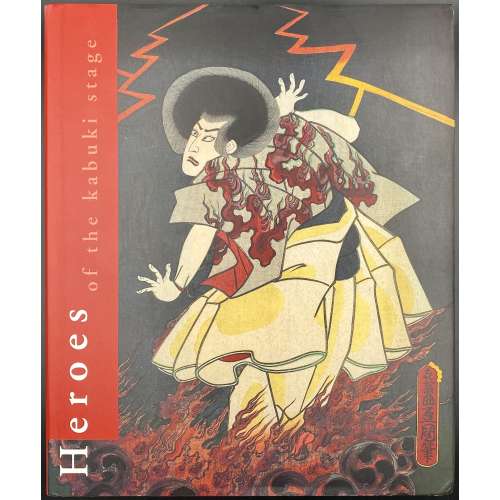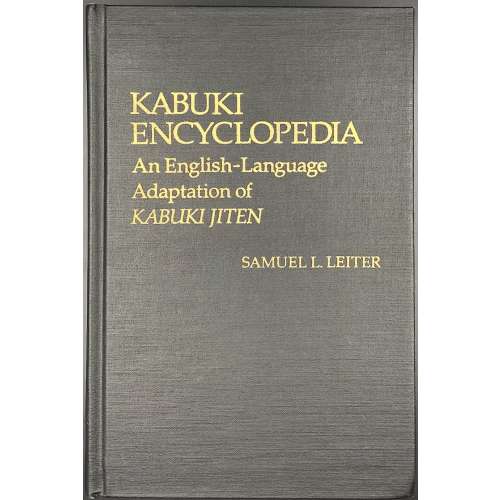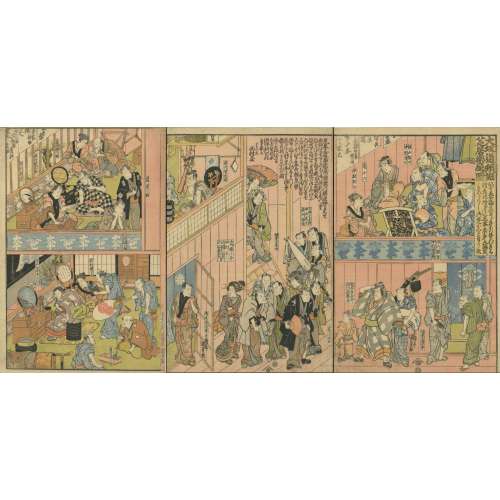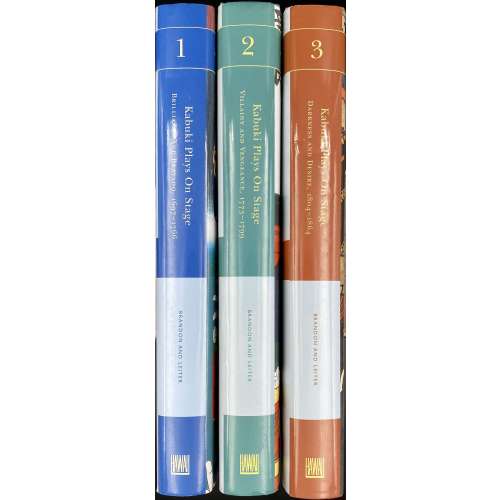 Ref.: (1) [LIB-1197.2016] Arendie and Henk Herwig. Heroes of the kabuki stage: an introduction to kabuki with retellings of famous plays, illustrated by woodblock prints. — Amsterdam: Hotei Publishing, 2004; pp. 243-249.
Ref.: (1) [LIB-1197.2016] Arendie and Henk Herwig. Heroes of the kabuki stage: an introduction to kabuki with retellings of famous plays, illustrated by woodblock prints. — Amsterdam: Hotei Publishing, 2004; pp. 243-249.



 Ref.: (1) [LIB-1197.2016] Arendie and Henk Herwig. Heroes of the kabuki stage: an introduction to kabuki with retellings of famous plays, illustrated by woodblock prints. — Amsterdam: Hotei Publishing, 2004; pp. 243-249.
Ref.: (1) [LIB-1197.2016] Arendie and Henk Herwig. Heroes of the kabuki stage: an introduction to kabuki with retellings of famous plays, illustrated by woodblock prints. — Amsterdam: Hotei Publishing, 2004; pp. 243-249.






 SVJP-0342.2021 |
 |
Kabuki actors Onoe Kikugorō III and Iwai Kumesaburo II. Year: c. 1832; Publisher: No seal; Signed: Kōchōrō Kunisada ga From Kunisada Project. |
 |
Kabuki actors Bandō Minosuke II and Iwai Shijaku I. Year: c. 1832; Publisher: No seal; Signed: Kōchōrō Kunisada ga From Kunisada Project. |



 SVJP-0336.2021 |

 Horst Graebner also noted that the performance took place at Nakamura Theatre in Edo on Bunsei 13/03 (03/1830) (see Waseda University Cultural Resources Database # 100-4224):
Horst Graebner also noted that the performance took place at Nakamura Theatre in Edo on Bunsei 13/03 (03/1830) (see Waseda University Cultural Resources Database # 100-4224):

Toyokuni II




Segawa Kikunojō III (Japanese, 1751 – 1810); other names: Segawa Senjo, Segawa Rokō III, Segawa Tomisaburō I, Ichiyama Tomisaburō, Ichiyama Shichinosuke. The actor held the name of Segawa Kikunojō III from the 11th lunar month of 1774 to the 7th lunar month of 1801. He surpassed all the actors of his time in both female and male roles, especially in the former, and achieved tremendous public acclaim.
Arashi Hinasuke II [嵐雛助] (Japanese, c. 1774 – 1801); other names: Nakamura Jūzō III, Kanō Hidenosuke I, Arashi Hidenosuke I. The actor held the name of Arashi Hinasuke II from the 1st lunar month of 1794 to the 2nd lunar month of 1801. Hi died in Edo on the 4th day of the 2nd lunar month of 1801. For the same characters illustrated by Utagawa Kuniyoshi see SVJP-0333.2021. Sources:
Sources:

 A famous Yoshiwara courtesan named Manjiya Yatsuhashi [万字屋 八ツ橋] was killed by a provincial commoner Sano Jirōzaemon [佐野次郎左衛門] (on the second sheet of the pair):
A famous Yoshiwara courtesan named Manjiya Yatsuhashi [万字屋 八ツ橋] was killed by a provincial commoner Sano Jirōzaemon [佐野次郎左衛門] (on the second sheet of the pair):
 SVJP-0298.2019: Ichikawa Ebizō V as Sano Jirōzaemon. |
 SVJP-0297.2019: Iwai Kumesaburō III as Manjiya Yatsuhashi |
 One more example can be seen in the two upper images at Waseda University Cultural Resources Database, № 006-2707:
One more example can be seen in the two upper images at Waseda University Cultural Resources Database, № 006-2707:







 "...The play Yoshitsune Koshigoe-jo was originally written for the puppet theatre (Bunraku) and staged for the first time in the 7th lunar month of 1754 in Ôsaka at the Toyotakeza. It was a revision of two early plays, Namiki Sōsuke's Nanbantetsu Gotō no Menuki (1735) and Yoshitsune Shin Fukumijō (1744). The title, which suggested that the play focused on Minamoto no Yoshitsune, was in fact dealing with the siege of the Ōsaka Castle, led by Tokugawa Ieyasu to destroy the Toyotomi clan in 1614 and 1615. This play was quickly forbidden because of the 4th act in which Gotobei's wife fired a gun at Yoritomo (this was of course interpreted as an attack on the Shogunate). Yoshitsune Koshigoe-jo was revised in 1770 by Toyotake Ōritsu, who completely rewrote the 4th act for a puppet production at the Kitahorieza in Ōsaka". Yoshitsune Koshigoe-jo was staged for the first time in Edo, at the Ichimuraza on the 9th lunar month of 1790, and is still performed.
Gotobei [五斗兵衛] (Gotohei or Gotobē), one of Yoshitsune’s loyal retainers, is forced to choose between his son’s life or his loyalty to Yoshitsune. Nishikidō brothers, who do not want Gotobei to become Yoshitsune's chief strategist, forced him to drink sake and get asleep. To prove Gotobei's military abilities, Izumi no Saburō fires a gun next to Gotobei's ear, and "he jumps up immediately, in full possession of his senses, ready to repulse any enemy". See: [LIB-1193.2013] Samuel L. Leiter. Kabuki Encyclopedia: An English-language adaptation of Kabuki Jiten. — Westport, CT; London: Greenwood Press, 1979; pp. 266-7).
Ref: [LIB-2993.2022] Fig. 24 in Israel Goldman. Japanese prints and paintings / 40th anniversary; Catalogue 27, 2021.
Two more Kunisada's fan prints (in Paul Griffith's collection), depicting the same actor Nakamura Shikan II as Toneri Matsuōmaru [舎人松王丸] were published in 1832 by Iseya Ichiemon. The play was Sugawara's Secrets of Calligraphy [菅原伝授手習鑑] (Sugawara Denju Tenarai Kagami). See: [LIB-1212.2017] Robert Schaap. Kunisada: Imaging, drama and beauty / Introduction by Sebastian Izzard, contributions by Paul Griffith and Henk. J. Herwig. — Leiden: Hotei Publishing, ©2016.
"...The play Yoshitsune Koshigoe-jo was originally written for the puppet theatre (Bunraku) and staged for the first time in the 7th lunar month of 1754 in Ôsaka at the Toyotakeza. It was a revision of two early plays, Namiki Sōsuke's Nanbantetsu Gotō no Menuki (1735) and Yoshitsune Shin Fukumijō (1744). The title, which suggested that the play focused on Minamoto no Yoshitsune, was in fact dealing with the siege of the Ōsaka Castle, led by Tokugawa Ieyasu to destroy the Toyotomi clan in 1614 and 1615. This play was quickly forbidden because of the 4th act in which Gotobei's wife fired a gun at Yoritomo (this was of course interpreted as an attack on the Shogunate). Yoshitsune Koshigoe-jo was revised in 1770 by Toyotake Ōritsu, who completely rewrote the 4th act for a puppet production at the Kitahorieza in Ōsaka". Yoshitsune Koshigoe-jo was staged for the first time in Edo, at the Ichimuraza on the 9th lunar month of 1790, and is still performed.
Gotobei [五斗兵衛] (Gotohei or Gotobē), one of Yoshitsune’s loyal retainers, is forced to choose between his son’s life or his loyalty to Yoshitsune. Nishikidō brothers, who do not want Gotobei to become Yoshitsune's chief strategist, forced him to drink sake and get asleep. To prove Gotobei's military abilities, Izumi no Saburō fires a gun next to Gotobei's ear, and "he jumps up immediately, in full possession of his senses, ready to repulse any enemy". See: [LIB-1193.2013] Samuel L. Leiter. Kabuki Encyclopedia: An English-language adaptation of Kabuki Jiten. — Westport, CT; London: Greenwood Press, 1979; pp. 266-7).
Ref: [LIB-2993.2022] Fig. 24 in Israel Goldman. Japanese prints and paintings / 40th anniversary; Catalogue 27, 2021.
Two more Kunisada's fan prints (in Paul Griffith's collection), depicting the same actor Nakamura Shikan II as Toneri Matsuōmaru [舎人松王丸] were published in 1832 by Iseya Ichiemon. The play was Sugawara's Secrets of Calligraphy [菅原伝授手習鑑] (Sugawara Denju Tenarai Kagami). See: [LIB-1212.2017] Robert Schaap. Kunisada: Imaging, drama and beauty / Introduction by Sebastian Izzard, contributions by Paul Griffith and Henk. J. Herwig. — Leiden: Hotei Publishing, ©2016.
 |
 |



Katsukawa Shun'ei. The Actor Ichikawa Monnosuke II in an Aragoto Role. LACME.

Actor Ichikawa Monnosuke II as Date no Yosaku Artist Tôshûsai Sharaku (Japanese, active 1794–1795), Publisher Tsutaya Jûzaburô (Kôshodô) (Japanese) 1794 (Kansei 6), 5th month. MFA.

Ippitsusai Bunchô. Actor Ichikawa Monnosuke II as Tsunewakamaru. Play: Iro Moyô Aoyagi Soga Theater: Nakamura. MFA.